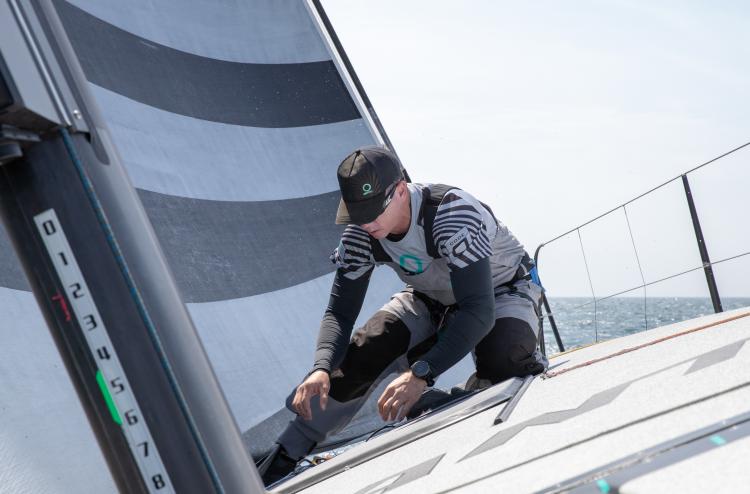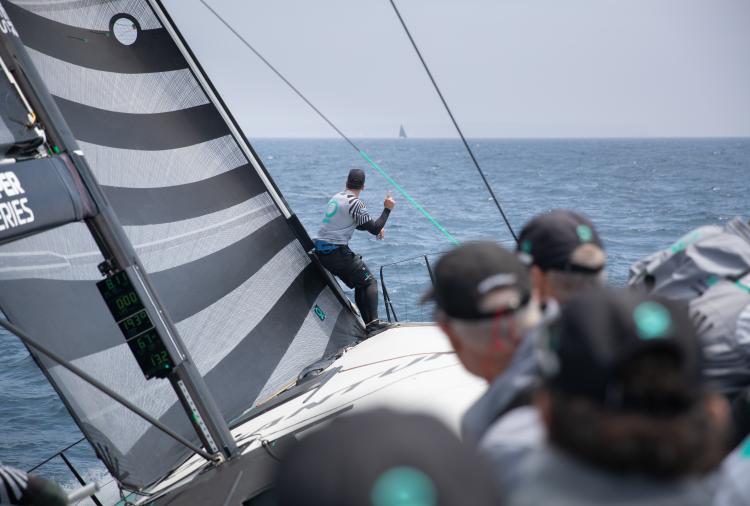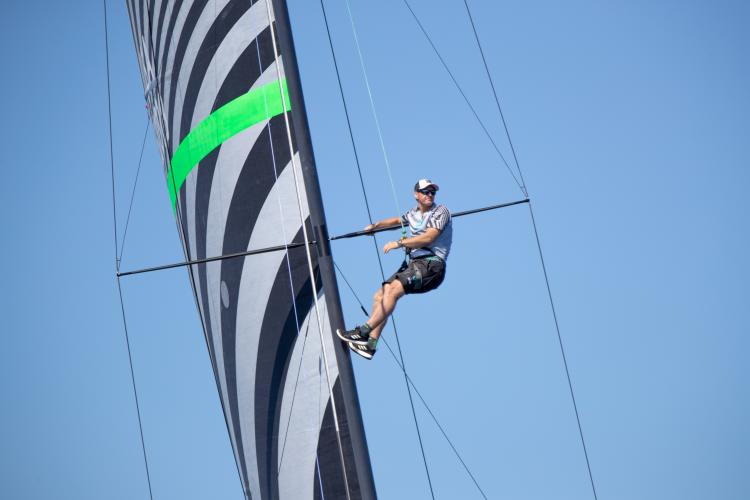Up Your Game on the Pointy End
In previous articles we talked in general terms about what makes a great crew. Let’s get more specific. Starting with the front of the boat, what are the keys to becoming a great bow person? For bigger boats this includes the mast person since they work as a team.

Need to be fit
Doing the pointy end on any boat definitely requires a good mixture of balance and agility. Pure strength is handy, but far more important is strength-to-weight ratio. This is actually a great spot for smaller and/or female physiques. No one needs extra weight forward. A certain amount of courage is also nice. Part of the job requirements could be going up the mast or out to the end of the pole in less than ideal conditions. This is the crew member who wears a harness. It is part of what makes this a glamorous spot. Many great sailors started their big boat careers on bow when they were young, fit and fearless. (Then, they got smart).

It’s all about preparation
If you are just stringing the boat as you get out to the starting area, you are late and are making your job harder than it needs to be. The bow team is usually among the first down to the boat. Packing spinnakers (don’t trust this to others; think of yourself as a sky diver packing your own chute), organizing gear and sails down below so you know where everything is, running sheets, halyards, and having the probable spinnaker and jib plugged in: This all needs to happen before you leave the dock.
As soon as you leave the dock you should be ready to put sails up. Confer with the tactician about what they anticipate the weather will bring, what the likely course options are, what they are thinking about in terms of sail selection. Anything you can do to help you anticipate.
Mechanics first
The bow team’s first responsibility is to get sails up and down cleanly. There are four evolutions to plan for: tacks, sets, gybes, and takedowns. Develop a game plan with every step mapped out for each. Who moves where when? How do we minimize the number of moves so we can spend more time with our weight in the right place? It will vary from boat to boat depending on size and layout. The goal is to have a system so you do things the same way pretty much every time.

Priorities
The best bow teams understand that minimizing movement and having weight in the right place are a key. A couple of my pet peeves:
Do we really need to have three people off the rail coming into the weather mark getting the spinnaker setup? This is a critical moment when everybody hiking can be the difference between making the mark or having to tack twice.
Set the spinnaker, put the weight where it belongs, and freeze. Don’t clean up or get ready for next evolution until the boat is settled down and going well.
No clean up after a leeward mark rounding! Do what you can before getting there. Upwind sail controls on. Check to see if you will need to tack quickly and get setup. At the rounding, hike! You can get ready for the next spinnaker set later in the leg when things have sorted out.
Think like a tactician
The best bow teams anticipate. They don’t need to be told that the mark is coming up and they need to get ready for a set or douse. They recognize that the lay line is coming up and what that means to their timing. The pole is set, the tack line for the spinnaker is pulled out, and the halyard is ready to go without any prompting. All that is needed is confirmation from the tactician that this is the final approach. They recognize that 90 percent of the beat has been on starboard tack and that an early gybe or a gybe-set is going to be in order. They confer with the tactician to confirm the plan.
Above all they are ready for anything. Coming into the leeward mark they know that the tactician may change his/her mind at the last moment about which gate to go around. They don’t care because they are ready for anything and are watching how things are setting up. They recognize that the original plan may change in the heat of battle.
Stay calm
Which leads me to the last great mental strength that the best bow teams share. They always remain calm under pressure. Yelling and screaming are signs of loss of control and will not produce faster results. Even under the gun movements need to be deliberate or they just will have to be done again. Now this does not mean that they don’t occasionally deserve the right to look back at the tactician, who has just made the call to change to a gybe set five boat lengths before the weather mark, and calmly tell them “you own this.”
Questions? Email [email protected].




